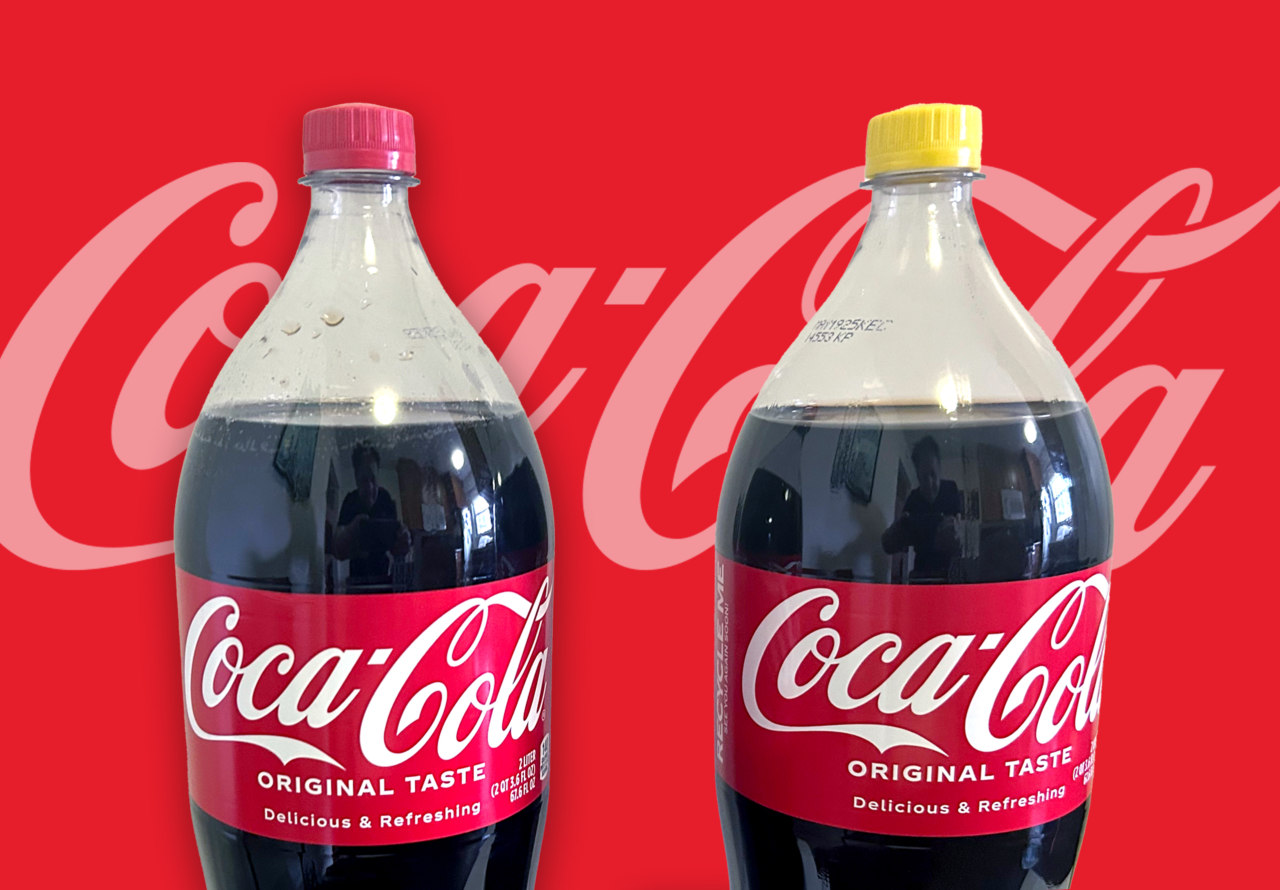If You Like Baklava, You’ll Love This Fragrant Persian Cake
This moist and aromatic sweet cake smells, looks, and tastes like Persian baklava.


Baklava is indispensable to the Persian culinary landscape, just as it is to other baklava-loving cultures from Armenia and Azerbaijan to Lebanon and Syria and over to Turkey and Greece. The most common iterations of traditional baklava feature layers of buttery phyllo dough and nuts drenched in simple syrup or honey. And if you are a fan of traditional baklava—regardless of the cultural origin of the particular iteration—you will likely agree with me that the process of making this crunchy and nutty dessert is a bit involved, and can be intimidating to make for those less acquainted.
But this Persian baklava–inspired cake—a confection that’s well known throughout the Persian diaspora—is a great way to enjoy the best qualities of baklava, within a simpler-to-prepare cake. While this rich, dense, syrupy cake is less complicated to prepare than baklava, it still delivers the aromas, flavors, textures, and appearance that should satisfy most baklava lovers. Infused with the warm, fragrant notes of saffron, cardamom, and rose water, this cake is a true indulgence. 
The famous British culinary personality Nigella Lawson once said, “no one with any self-respect is a same-day trifle maker.” Along the lines of Nigella Lawson's assertion about trifles, I must emphasize that Persian baklava cake, too, requires a lengthy soak to reach its full potential. As the syrup penetrates the cake, it creates a symphony of textures and flavors that is unparalleled. So, for the ultimate baklava cake experience, plan to make it a day before serving.
A Bit of Background About Persian Baklava and Baklava Cake
Etymologists trace the English word "baklava" to the Ottoman Turkish word باقلوا which is also identical in Persian and pronounced bāghlavā. The word entered English in the mid-17th century. Persians have two names for this cake. One translates to "baklava cake" and another that translates to "syrupy cake," referring to the cake having been slathered heavily with an aromatic sugary syrup.
Even within Iran, baklava varies from region to region, but the most famous and popular ones are from the city of Yazd in central Iran. Yazd is famous for its sweets, and its confectioneries are well known not only to Iranians across the entire country but also to tourists visiting Iran. This Persian baklava cake produces a rich, dense, syrupy cake that mimics the look and flavor of Yazd-style baklava.
There are three key characteristics that set traditional Persian baklava apart from other types of baklavas: its pastry dough, its nut filling, and its syrup. The pastry dough used to make traditional Persian baklava is thicker than the phyllo used in Greek-style baklava and the yufka dough used for Turkish-style baklava. Instead of a dozen or so layers of phyllo or yufka, only two layers of the thicker dough are used to make Persian baklava. 
The variety of nuts used for the filling in traditional Persian baklava and baklava cake is somewhat similar to those of Greek-style and Turkish-style baklava—some combination of pistachios, almonds, and walnuts—but in Iran, the nuts are ground to a much finer grade and are packed much more densely. The syrup used to make Persian baklava is made with saffron, cardamom, and rose water, resulting in a more complex and aromatic sweet compared to Greek or Turkish versions.
Key Ingredients for the Baklava Cake
In order to partially replicate the crumbly texture and nutty flavor of Persian baklava, this cake uses finely ground almonds and pistachios in the cake batter. You have several options for acquiring your finely ground nuts. You can grind your own nuts by starting with whole (or slivered) blanched almonds and whole shelled raw or toasted pistachios. Using a large food processor, pulse the nuts until finely ground, stirring a couple of times to prevent them from turning into a paste—it is OK if a few larger pieces remain.
Alternatively, you can purchase already finely ground almonds and pistachios. For almonds, you can purchase almond meal or almond flour—now readily available in most well stocked grocery stores. For finely ground pistachios, your best bet is to order from online sources. Your final option is to use a bit of elbow grease and grind your whole nuts by hand either with a large old-fashioned mortar and pestle or with a rolling pin with the nuts in a plastic bag.
This recipe calls for cardamom in two different forms: whole cardamom seeds or pods for the syrup and finely ground cardamom for the batter. The ground cardamom is incorporated into the dry ingredients to ensure uniform distribution throughout the cake. While ground cardamom could go in the syrup, it would slightly darken the vibrant yellow hue imparted by the steeped saffron. To preserve the syrup's beautiful color, whole cardamom pods are used and removed before the cake is soaked.
The most common garnish for the cake is coarsely ground or slivered pistachios. Other popular garnish options include whole dried rose petals, crushed dried rose petals, and coconut flakes. You can also use a combination of pistachios and any of these.
3 Tips for Baking and Slicing the Cake
While my recipe is fairly simple to prepare, here are a few additional tips to ensure the cake is properly baked and easy to slices into bite-size pieces that look very similar to baklava.
- Use a 9 x 13-inch baking pan for baking, as this will yield an inch-thick cake—the same thickness as traditional Persian baklava.
- This cake is traditionally cut into one and a half– to two-inch bite-size squares or diamond-shaped pieces, and then placed on serving dishes. Because of the small size of the pieces, it is easier to cut the cake once it has been removed from the baking pan and placed on a cutting board. If you don’t have a cutting board large enough, you can invert the cake onto a piece of parchment paper set on the back of another rimmed baking sheet.
- Since the cake is a bit crumbly, it’s easier to achieve cleaner cut edges by cutting the cake after it has been soaked with half of the syrup. The cake at this stage is moistened enough so that fewer crumbs will flake away while slicing. The rest of the syrup is incorporated after the cake has been cut into pieces, which ensures more of the flavorful syrup soaks into the exposed cut edges and is better absorbed into the cake.

Serving Suggestions
Once the cake is cut into squares or diamonds and garnished, the resulting bite-size pieces are often arranged on a serving dish or a platter and brought to the table for guests to help themselves.
Whether served as an afternoon snack, as an after-meal sweet ending, or for welcoming guests to one’s home, this sweet floral cake pairs beautifully with a hot cup of black tea.
Adjust oven rack to middle position and preheat the oven to 325°F (160°C). Lightly grease bottom and sides of a 9 x 13-inch baking pan and line bottom of pan with parchment paper; set aside.
In a small mixing bowl, stir together yogurt, rose water, and steeped liquid saffron.
In a medium mixing bowl, whisk together all-purpose flour, almond flour, pistachio flour, baking powder, finely ground cardamom, and salt until thoroughly combined and lump-free.
In the bowl of stand mixer fitted with the whisk attachment, whisk sugar and orange zest on low speed until zest is evenly distributed and sugar appears moistened and clumped, about 1 minute.
Add butter to sugar and orange zest mixture and mix on medium-low speed for until blended 1 minute. Increase speed to medium-high and whisk until pale and fluffy, about another 3 minutes, scraping down sides of bowl as needed.
Reduce mixer speed to low and add eggs, one at a time, scraping down bowl after each addition.
Add prepared yogurt mixture and mix at low speed until combined, about 1 minute.
Move mixing bowl from stand mixer to kitchen counter. With a silicone spatula, fold in one third of prepared flour mixture until partially mixed. Repeat with another third of flour mixture, then with remaining flour mixture; continue mixing with spatula until no streaks of dry ingredients remain. Batter will be very thick.
Scrape batter into prepared baking pan. Using an offset or silicone spatula, spread batter into a smooth even layer. Bake cake, rotating pan once halfway through baking, until golden brown, center feels firm when gently pressed, and a cake tester or toothpick inserted into the center of the cake comes out clean, about 45 minutes.
For the Syrup: While cake is baking, prepare syrup. In a 2-quart saucepan, combine all syrup ingredients and heat over medium-high stir until sugar is dissolved. Once mixture starts to boil, reduce heat to rapid simmer with soft bubbles, and simmer until mixture is reduced by half and its temperature has reached about 118-120°F (47-48°C), 10 to 15 minutes. Remove from heat and let cool to room temperature. Remove and discard cardamom seeds or pods.
Once cake is baked, let it cool in the pan for about 15 minutes, then run a knife around edges of pan to loosen it. Invert a large cooling rack on the cake pan, then flip over the cooling rack and cake pan together. Using oven mitts or kitchen towels, gently lift and remove pan and parchment paper.
Cover a large cutting board with a sheet of fresh parchment paper. Re-invert cake onto parchment-covered cutting board. Use a toothpick or cake tester to poke holes all over cake’s surface. Using a pastry brush, liberally brush half of the syrup onto the cake while still warm. Let the cake cool completely, 3 to 4 hours.
With cake on parchment-covered cutting board, use a sharp knife to cut cake into bite-size diamonds or squares (about 1 1/2 inches x 1 1/2 inches). Leave cut cake on board. Brush remaining syrup onto cake. Be more liberal with syrup when brushing over the grooves made by the knife. At this stage, the cake can be garnished and served immediately. Or, for a fuller flavor, let cake sit for up to 24 hours before garnishing and serving. (I believe the cake is best when left to soak up the syrup for a longer period of time—as the syrup penetrates the cake, it enhances its flavor.)
For serving, garnish each bite-size piece with coarsely ground or slivered pistachios. Alternatively, garnish with any desired combination of pistachios and whole dried rose petals, crushed dried rose petals, or ground coconut flakes.
Variations
In addition to using pistachios and almonds, some Persian home cooks incorporate finely ground walnuts into the cake. As long as you have a total of 150 grams of ground nuts, any combination of pistachios, almonds, and walnuts will work.
If you desire a thicker cake, replace the suggested 9 x 13–inch baking pan with a 9 x 9–inch square or a 10-inch round baking pan. The baking time should not be much different but always make sure the cake has developed a uniform golden-brown top before taking it out of the oven.
If you want to deviate a bit from the traditional bite-size square or diamond-shaped pieces, an attractive option is to bake the batter as if you were baking cupcakes. Using small fluted/flared cupcake liners (often used to make small brioche) makes it easier to take the baked mini cakes out of the liner, which in turn allows you to garnish the flat end of the mini cakes for a charming platter arrangement.
Special Equipment
9 x 13–inch baking pan, stand mixer with whisk attachment, toothpick or cake tester, 2-quart saucepan, wire cooling rack, cutting board slightly larger than 9x13 (alternatively use the back of a baker’s half sheet), parchment paper, pastry brush.
Notes
It is best to grind saffron from threads as needed, which is most easily done with a stone mortar and pestle. Like many spices, saffron retains its flavor better in its whole (thread) form. Store-bought ground or powdered saffron if often dull and stale, or, worse, mixed with other ingredients as filler. While you likely don't have a kitchen scale that can reliably weigh a single gram of saffron, it is often sold by the gram in small containers. If, for example, you had a 2 g box of saffron, you would use half of those threads for the cake and half for the syrup.
For both the almonds and pistachios, you can grind your own nuts by starting with whole (or slivered) blanched almonds and whole shelled raw or toasted pistachios. Using a large food processor, pulse the nuts until finely ground, stirring a couple of times to prevent them from turning into a paste—it is OK if a few larger pieces remain.
Alternatively, you can purchase already finely ground almonds and pistachios. For almonds, you can purchase almond meal or almond flour—now readily available in most well stocked grocery stores. For finely ground pistachios, your best bet is to order from online sources unless you live near a Persian market.
Make-Ahead and Storage
The syrup for this cake can be made up to 2 weeks ahead and refrigerated in an airtight container. It is a lovely and versatile aromatic syrup with a beautiful golden color. I often make a large batch—the recipe for the syrup is very scalable—and keep it in a clear glass bottle in the door of my refrigerator. You can drizzle it on pancakes, put it on peanut butter sandwiches instead of jam, substitute it for honey, drip a bit on dark chocolate ice cream, use it to make lemonade, or replace simple syrup with it to jazz up your favorite cocktail.
Leftovers, if there is such a thing with this cake, stored in an airtight container in the refrigerator will stay fresh for at least a week. Let them warm up to room temperature before serving.
If you let the cake pieces sit on the kitchen counter uncovered, they will eventually dry out. Pulse the completely dried pieces in your food processor into a coarse breadcrumb-like mass. Sprinkle this on top of cakes, open-face peanut butter sandwiches, open-face bagel and cream cheese sandwiches, or a bowl of fruit cocktail to add a magical crunchy layer.
What's Your Reaction?





















































































